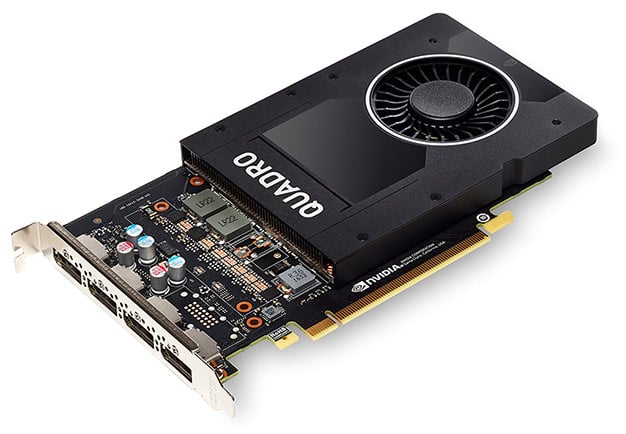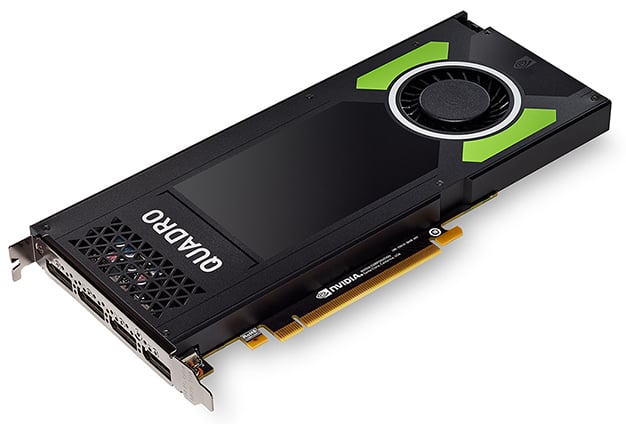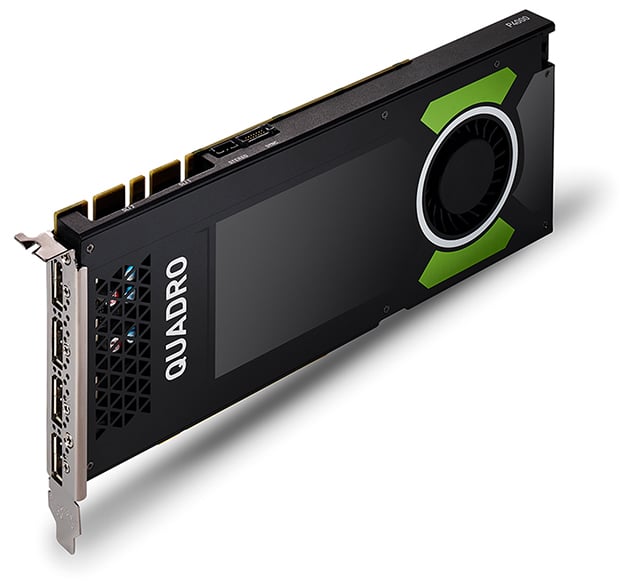NVIDIA Quadro P4000 And P2000 Workstation GPU Review: Midrange Professional Pascal
The NVIDIA Quadro P4000 & P2000
A couple of weeks back, NVIDIA unveiled a family of new professional Quadro cards, based on the company’s Pascal GPU architecture. The latest additions to the Quadro line-up run the gamut in terms of features and capabilities, from the low-power, small form factor Quadro P400 to the gargantuan, ultra-powerful Quadro GP100. Smack dab in the middle of the line-up are a pair of mid-range offerings, the Quadro P4000 and Quadro P2000, which we’ll be featuring here.
The Quadro P4000 and P2000 are both single-slot, capable solutions that target more mainstream professional-graphics market segments, very much like the AMD Radeon Pro WX 5100 and WX 7100 we recently evaluated. We’ve got the Quadro P4000’s and P2000’s high-level features and specifications listed below, and have run a full suite of pro application benchmarks and tests on the pages ahead...
The NVIDIA Quadro P4000 and P2000 are based on the same GPU architecture, and have similar feature sets, but the P4000 is clearly the more powerful card. They both have similar output configurations and display support, but the P4000 offers more memory (8GB vs. 5GB), and significantly higher compute performance and peak memory bandwidth.
The Quadro P2000 (pictured above) has a short PCB, with a single-slot active cooler that extends the overall length of the card to 6.6”. It features 1024 active CUDA cores, and offers up to 3 TFLOPs of single-precision compute performance. There is no built-in support for stereo displays or NVIDIA’s video sync module, but 3D Vision and 3D Vision Pro support is enabled over USB. Due to the low-power design of the card and its GPU, its max power comes in at under 75 watts, so the P2000 does not require any supplemental power feeds – it can be fed completely by the PEG slot.
The Quadro P4000 also has a relatively short PCB, with a cooler than extends the overall length of the card. The P4000, however, is somewhat longer than the P2000 at about 9.5”. It has 1792 active CUDA cores, and offers up to 5.3 TFLOPs of single-precision compute. Memory bandwidth is north of 243GB/s, and it features built-in support for NVIDIA’s Quadro Sync II module, GPU direct for video, and 3D Vision (and 3D Vision Pro). Due to the P4000 higher-performance, it also has increased power requirements. The P4000’s max power is about 105W, which necessitates an additional 6-pin PCI Express power connector.
Along the top of the P4000, not present on the P2000, are SLI connectors, and the stereo and sync ports, for the option stereo display and Quadro Sync modules. The power connector extends off the back of the card.
Display outputs on both cards consist of a quartet of full-sized DisplayPorts. The DisplayPorts are 1.4 certified, which enables support for 4K displays at 120Hz, 5K displays at 60Hz, and 8K displays at 60Hz (using two cables and multi-stream transport). Up to four display outputs can be used simultaneously for multi-monitor or VR setups.
The Quadro P4000 and P2000 are both single-slot, capable solutions that target more mainstream professional-graphics market segments, very much like the AMD Radeon Pro WX 5100 and WX 7100 we recently evaluated. We’ve got the Quadro P4000’s and P2000’s high-level features and specifications listed below, and have run a full suite of pro application benchmarks and tests on the pages ahead...
|
| Quadro P4000 | Quadro P2000 | |
| Architecture | Pascal | Pascal |
| CUDA Parallel Processing cores | 1792 | 1024 |
| Peak Single Precision Performance | Up to 5.3 TFLOPs | Up to 3 TFLOPs |
| Frame Buffer Memory | 8 GB GDDR5X | 5GB GDDR5X |
| ECC Memory | No | No |
| Memory Interface | 256-bit | 160-bit |
| Memory Bandwidth | 243 GB/s | 140 GB/s |
| Max Power Consumption | 105 W | 75 W |
| Graphics Bus | PCI Express 3.0 x16 | PCI Express 3.0 x16 |
| Display Connectors | DP 1.4 (4), Optional Stereo (1) | DP 1.4 (4) |
| Maximum Supported Displays | 4 | 4 |
| Maximum Displays @ 4K 60Hz | 4 | 4 |
| Form Factor | 4.4” H x 9.5” L Single Slot | 4.3” H x 6.6” L Single Slot |
| Thermal Solution | Active | Active |
| NVIDIA 3D Vision and 3D Vision Pro | Support via 3 pin mini DIN | Support via USB |
| Video Sync Module | Quadro Sync II | N/A |
| GPU Direct for Video | Yes | N/A |
The NVIDIA Quadro P4000 and P2000 are based on the same GPU architecture, and have similar feature sets, but the P4000 is clearly the more powerful card. They both have similar output configurations and display support, but the P4000 offers more memory (8GB vs. 5GB), and significantly higher compute performance and peak memory bandwidth.
The Quadro P2000 (pictured above) has a short PCB, with a single-slot active cooler that extends the overall length of the card to 6.6”. It features 1024 active CUDA cores, and offers up to 3 TFLOPs of single-precision compute performance. There is no built-in support for stereo displays or NVIDIA’s video sync module, but 3D Vision and 3D Vision Pro support is enabled over USB. Due to the low-power design of the card and its GPU, its max power comes in at under 75 watts, so the P2000 does not require any supplemental power feeds – it can be fed completely by the PEG slot.
The Quadro P4000 also has a relatively short PCB, with a cooler than extends the overall length of the card. The P4000, however, is somewhat longer than the P2000 at about 9.5”. It has 1792 active CUDA cores, and offers up to 5.3 TFLOPs of single-precision compute. Memory bandwidth is north of 243GB/s, and it features built-in support for NVIDIA’s Quadro Sync II module, GPU direct for video, and 3D Vision (and 3D Vision Pro). Due to the P4000 higher-performance, it also has increased power requirements. The P4000’s max power is about 105W, which necessitates an additional 6-pin PCI Express power connector.
Along the top of the P4000, not present on the P2000, are SLI connectors, and the stereo and sync ports, for the option stereo display and Quadro Sync modules. The power connector extends off the back of the card.
Display outputs on both cards consist of a quartet of full-sized DisplayPorts. The DisplayPorts are 1.4 certified, which enables support for 4K displays at 120Hz, 5K displays at 60Hz, and 8K displays at 60Hz (using two cables and multi-stream transport). Up to four display outputs can be used simultaneously for multi-monitor or VR setups.











